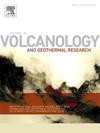Automated seismo-volcanic event detection applied to popocatépetl using machine learning
IF 2.4
3区 地球科学
Q2 GEOSCIENCES, MULTIDISCIPLINARY
Journal of Volcanology and Geothermal Research
Pub Date : 2025-02-01
DOI:10.1016/j.jvolgeores.2024.108261
引用次数: 0
Abstract
Popocatépetl, one of Mexico's most active volcanoes, exhibits high seismicity since its reactivation in 1994. Identifying and classifying its different seismo-volcanic events is crucial for understanding the volcano's dynamics. Machine Learning (ML) methods have proven effective in this task; however, their accuracy often relies on large-scale labeled datasets and they are typically tested on single stations. This may limit a broader applicability across seismic networks monitoring volcanoes. Here, we present an updated ML-based workflow for the automated detection and classification of long-period (LP) events, tremors (TR), and volcano-tectonic (VT) earthquakes at Popocatépetl, using continuous seismic recordings from 2019 to 2023. The workflow leverages data from a network of up to 19 seismic stations, enhancing event classification with a limited labeled dataset and improving reliability across multiple stations. The workflow is divided into two stages: the first stage generates LP and TR catalogs by training a classification model using Popocatépetl's data. The second stage creates the VT catalog using a pre-trained phase-picking and phase association models, alongside standard seismological methods for event location. The automatic catalogs generated by our workflow accurately captured the temporal and spatial trends of seismicity at Popocatépetl over more than four years, including periods of increased volcanic activity. Our approach also identified additional events not reported in manual analyses, improving the detection of trends related to volcanic processes, such as activity related to dome emplacement, periods of explosive activity, and potential system pressurization.
利用机器学习自动探测波波卡特佩特尔的地震-火山事件
墨西哥最活跃的火山之一popocatacimetel火山自1994年重新活跃以来一直表现出高地震活动性。识别和分类其不同的地震-火山事件是了解火山动力学的关键。机器学习(ML)方法已被证明在此任务中有效;然而,它们的准确性往往依赖于大规模的标记数据集,并且通常在单个站点上进行测试。这可能会限制地震网络监测火山的更广泛适用性。本文利用2019年至2023年的连续地震记录,提出了一种更新的基于ml的工作流程,用于自动检测和分类长周期(LP)事件、震颤(TR)和火山构造(VT)地震。该工作流程利用了多达19个地震台站的数据,通过有限的标记数据集增强了事件分类,并提高了多个台站的可靠性。工作流程分为两个阶段:第一阶段通过使用popocatsametel的数据训练分类模型来生成LP和TR目录。第二阶段使用预先训练的相位选择和相位关联模型,以及用于事件定位的标准地震学方法,创建VT目录。由我们的工作流程生成的自动目录准确地捕捉到了popocatacimetel在四年多的时间里地震活动的时空趋势,包括火山活动增加的时期。我们的方法还确定了人工分析中未报告的其他事件,提高了对火山过程相关趋势的检测,例如与圆顶就位相关的活动、爆炸活动时期和潜在的系统加压。
本文章由计算机程序翻译,如有差异,请以英文原文为准。
求助全文
约1分钟内获得全文
求助全文
来源期刊
CiteScore
5.90
自引率
13.80%
发文量
183
审稿时长
19.7 weeks
期刊介绍:
An international research journal with focus on volcanic and geothermal processes and their impact on the environment and society.
Submission of papers covering the following aspects of volcanology and geothermal research are encouraged:
(1) Geological aspects of volcanic systems: volcano stratigraphy, structure and tectonic influence; eruptive history; evolution of volcanic landforms; eruption style and progress; dispersal patterns of lava and ash; analysis of real-time eruption observations.
(2) Geochemical and petrological aspects of volcanic rocks: magma genesis and evolution; crystallization; volatile compositions, solubility, and degassing; volcanic petrography and textural analysis.
(3) Hydrology, geochemistry and measurement of volcanic and hydrothermal fluids: volcanic gas emissions; fumaroles and springs; crater lakes; hydrothermal mineralization.
(4) Geophysical aspects of volcanic systems: physical properties of volcanic rocks and magmas; heat flow studies; volcano seismology, geodesy and remote sensing.
(5) Computational modeling and experimental simulation of magmatic and hydrothermal processes: eruption dynamics; magma transport and storage; plume dynamics and ash dispersal; lava flow dynamics; hydrothermal fluid flow; thermodynamics of aqueous fluids and melts.
(6) Volcano hazard and risk research: hazard zonation methodology, development of forecasting tools; assessment techniques for vulnerability and impact.

 求助内容:
求助内容: 应助结果提醒方式:
应助结果提醒方式:


